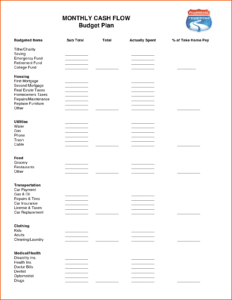
Understanding which wages are non-taxable allows small business owners to provide added benefits to their employees efficiently. A salaried employee receives a fixed annual income, divided across pay periods throughout the year. Unlike hourly employees, their pay isn’t based on the number of hours worked. This model offers stability for both the employee and employer; however, it requires clear communication regarding expectations and responsibilities.
Deputy Director for Curriculum Development & Planning Judicial Institute
If the company does not pay in arrears, then the paychecks will be for the current workweek, even though it hasn’t yet ended. For example, say you hire Julie and say you’ll pay her a $50,000 salary. Under federal law, a tipped employee is an employee who frequently and customarily receives over $30 monthly in tips. In terms of state income tax, an employee is a non-resident if they work temporarily in a state that is not their residency and they have intention of making that state their home.
Old-Age, Survivors, and Disability Insurance (OASDI)
If you don’t want to go it alone, you can entrust your payroll to the experts at Paycor. Under this law, employers are required to notify employees at least 60 days before a plant https://www.personal-accounting.org/normal-profit-definition/ closing or other type of mass layoff. In payroll processing, an accrual occurs any time there is a difference between the pay cycle allocation and the actual expenses paid.
Federal Insurance Contribution Act (FICA) Taxes
Salaried employees can be exempt from overtime, but they aren’t always, so make sure you’re classifying your workers correctly. The Federal Unemployment Tax Act (FUTA) tax is a payroll tax that employers are required to pay to the federal government to help fund unemployment benefits. The tax is 6% of the first $7,000 that an https://www.quick-bookkeeping.net/ employee earns; however, most businesses do not pay the full 6%. Withholding tax refers to the portion of an employee’s wages deducted by the employer and paid directly to the government as a partial payment of income tax. The amount withheld is determined by the employee’s earnings and the information provided on their W-4.


I’m assuming it was the bank holiday on Wednesday but I was told that would have no impact with people getting paid on Friday. Payroll doesn’t have to be complicated, but it does have to be right. Stay compliant, collect employee data, and streamline tax filing – all while putting time back in your day with our automated payroll software. With the assurance of an error-free workflow, you can get back to what matters most – your people.
Withholding and Deductions

But when the process is understood by everyone, the shared knowledge it brings elevates an entire organization. New hire reporting is a process employers undergo to report new hires to their state. Federal law requires that all new hires be reported within 20 days of their hire date, but some states are stricter (Alabama requires seven days). A third-party organization that partners with businesses to streamline HR and payroll tasks. A situation wherein employees receive the same pay despite having different levels of experience, skills, or qualifications. The total value of non-cash compensation given to employees by an employer.
- Most payroll taxes are calculated as a percentage of employee earnings.
- This is the amount earned by employees before any income taxes, benefits, or deductions are taken out.
- In addition, employers are responsible for employer taxes, paid using business funds separate from employee compensation.
- One way to think of this is that it’s the employee’s take-home pay.
- Most businesses qualify for a 5.4% FUTA credit reduction after paying their state unemployment taxes, bringing the FUTA tax rate down to 0.6%.
Also included is any additional time the employee is allowed (i.e., suffered or permitted) to work.” Defined by the United States Department of Labor. A state-administered program that provides cost insurance and freight partial wage replacement to employees who are unable to work because of an illness or injury. Depending on the state, SDI coverage may be funded by the employee, the employer, or both.
Smaller companies, on the other hand, may rely on a couple generalized administrators — or outsource payroll administration altogether. To start off, we need to define and understand specific basic but key terms such as what payroll and payroll taxes mean. This is the employee’s usual base rate of pay, excluding loading, or penalties. For example, a casual employee’s base rate of pay may be $20 per hour however their hourly rate would be $25 (assuming a 25% casual loading rate). An Income Statement is a report provided to the employee at the end of the financial year to provide the yearly totals for wages, tax and superannuation. Employees will receive different entitlements based on their type of employment.
They’re not employees, so they aren’t protected by federal labor laws or the federal government’s minimum wage requirement. In turn, employers don’t pay payroll taxes on their earnings; instead, they complete a 1099-NEC form for all contractors paid over $600. This is the amount earned by employees before any income taxes, benefits, or deductions are taken out.
A standard for measuring the affordability of employer healthcare coverage under the ACA. It’s easy to get lost in the lingo of human resources and payroll. Browse by category, alphabetically, or use the search bar to find what you need. Search our glossary to get simple definitions of common payroll-related words, phrases, and acronyms. We’re firm believers in the Golden Rule, which is why editorial opinions are ours alone and have not been previously reviewed, approved, or endorsed by included advertisers. The Ascent, a Motley Fool service, does not cover all offers on the market.
There are many different types of cloud-based accounting software available for small businesses. The type of industry and number of employees are two factors that will dictate which accounting software is appropriate. For example, a freelancer would not need the same features in a piece of accounting software as a restaurant owner. The U.S. Department of Labor requires employers to keep all payroll records for three years.




